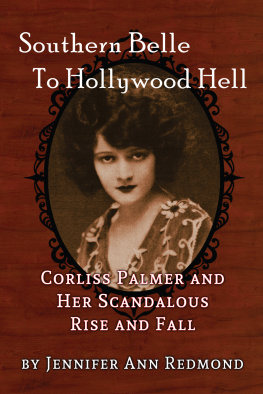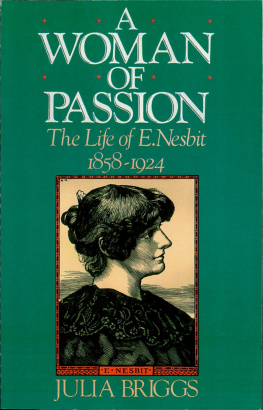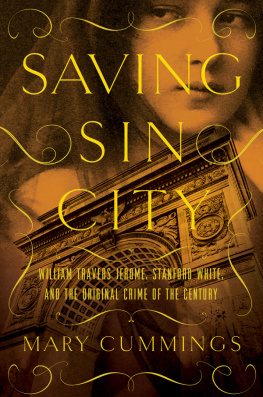ACKNOWLEDGMENTS
There are so many people over the course of a decade who helped me with this book that I am sure to forget to thank someone; I apologize in advance.
I want to thank Greenpoint, Brooklyn, for my parents, Martin and Estelle. Im indebted to my mom and thank my sister, Pam, for her unwavering faith in me, and although I miss my dad, who offered his keen endorsement at the start of my book, I am very happy to have Michael Martin, my nephew, born halfway through this process, who seems at uncanny moments to channel my fathers spirit. I want to thank the Winks of Seaford Manor for their continued encouragement, and the Pittsburgh branch, who offered a base of operations for my research in what seems a lifetime ago. Then there are my own kids, who not only understand my madness but share itTammy Baiko, Eric Chiarulli, Nick Mougis, Allyson Smith, and Brian Smyth. And of course, none of this would have mattered as much were it not for Lisa Cardyn and Lorri Ford, whose friendship and perseverance in the face of seemingly insurmountable odds are a constant source of inspiration.
This book would not have been as meaningful and vivid were it not for Russell Thaw, Evelyn Nesbits wonderfully supportive grandson, and his mother, Barbara Thaw; their generosity and assistance with this project from its inception made me fearless in the face of a hundred years of mythology. I also would not have been able to complete this book were it not for continued institutional support from Hofstra University, its Faculty Research and Development Grants, and leave time. As for creative minds and kind hearts, I am particularly grateful to Paul Baker, Kevin Brownlow, Carl Charlson, Stuart Desmond, Ed and Helen Doctorow, Adolph Grude, George Hatie, Suzannah Lessard, Joe McMaster, Jay Maeder, Jim Petersen, and Ira Resnick. Their assorted acts of benevolence, encouragement, and advice have helped me greatly.
I am of course extremely grateful to my agent, Katharine Cluverius, at ICM, my editor, Sarah McGrath, whose instincts are right on, and her assistant, Sarah Stein, at Riverhead Books; each has helped me immeasurably to make this dream a reality, and I wish Katharine and Sarah M. the best world possible for their own new additions.
There is no way I can qualify the unconditional emotional support and intelligent contributions (editorial and otherwise) made by my friends and colleagues throughout this process (listed here in alphabetical order), so I will simply say thanks to Iska Alter, Dana Brand, Joe Fichtelberg, Bernie Firestone, Brad Hodges, Gloria Hoovert, John Klause, Susan Lorsch, Meghan Molloy, Jean Ng, Karen Schnitzspahn, and Chris Svatba. There have been many times when, immersed in my research or my writing, I have felt like Dorothy stuck in Oz, maddeningly unaware how close I was to home all the time, and I could never have made this strange journey without the brains, courage, and heart of Chris Rubeo, Allan David Dart, and Russell Svatba.
Last, American Eve is dedicated to my captain, the person who taught me the exaltation of an inland soul, Brian Molloy. His resolute spirit, fierce intellect, and joyous sense of humor made this all possible, and I miss him most of all.
EPILOGUE
The Fallen Idol
A former head of Scotland Yard... said that he wished girls, at the age of fourteen, could quietly be put to sleep by the State and allowed to remain unconscious until they were eighteen and ready to become harmless and normal women.
Frederick L. Collins, Glamorous Sinners
A woman like a country is happiest when she has no history.
Oscar Wilde
The tragedy wasnt that Stanford White died, but that I lived.
Evelyn Nesbit, 1934
s the child-woman whose age seemed intriguingly indeterminate to some and of great consequence to others, Evelyn Nesbit came to New York on the quivering cusp of possibility. Within a year, her captivating face and figure set a new, modern standard of beauty by which all others would then be measured. Acting as a mirror to the eras deceptively intoxicating and provocative charms, she offered an image of idealized youth and beauty imprinted on the collective consciousness of an America in perpetual and lustful pursuit of the last horizon of an endlessly retreating vision of innocence. One need only look at the remarkable Rudolf Eickemeyer Jr. photo taken of a sixteen-year-old Evelyn in 1901 (see page 6) to see the timeless and irresistible quality of a beauty that remains astonishingly contemporary, long after many so-called beauties of the past have faded from fashion. And memory.
It was an image too quickly and easily shattered.
Part Little Eva and part nymphet, proto-feminist and femme fatale, Evelyn Nesbit exposed an entire nations sins from the witness box while her own more startling and intimate transgressions were taken up with purple vengeance by the newspapers and promoted from the pulpits as a sizzling cautionary tale. Eventually spread out like a crazy quilt over six decades of the twentieth century, the details of the rest of her life illuminate not only her own personal strengths and weaknesses, but also the brightest and darkest aspects of the collective American Dream she embodied.
But if Evelyn Nesbits early life resonated with the intensity and naivet of Edisons melodrama that rushed to depict Rooftop Murder within a week of the rooftop murder, her life after that ghastly night and the trials that followed continued to move along in fits and starts, capturing in brief but vivid flashes an America always deliriously teetering on the brink of self-awareness. Or self-annihilation.
RSUM
After she rocked civilization (her own words) for a second time, Evelyns consistently mercurial life lurched forward with the same uneasy, haphazard, and artless misdirection it had since she was ten. Although she tried to pick up the shards of her ruined reputation by embarking on a vaudeville career, Evelyn (divorced from Harry in 1915, and no longer Thaw) Nesbit found to her dismay that she could not escape the tentacles of the press or her own swinging notoriety. In August of 1913, Harry escaped from the asylum to Canada, and until he was caught and brought back, Evelyn had to fear for her life since the papers were full of Thaws vengeful threats. In 1916, Evelyn married her dance partner, Jack Clifford (aka Virgil Montani), who was by all accounts an attentive surrogate father to young Russell, but who eventually split with Evelyn, when being known as Mr. Evelyn Nesbit became unbearable. She would never marry again. She tested the shadowy waters of silent film, the first of which was produced by the Lubin Company in exotic Fort Lee, New Jersey. Titled Threads of Destiny, it was, like the dozen or so films that followed between the years 1914 and 1922, a thinly veiled and self-consciously exploitative depiction of episodes from her own life best forgotten. Only stills of those films remain.
Never far from the front pages or controversy, Evelyn suffered again and again in the court of public opinion. She found herself at the center of a censorship battle over her films when some righteous-minded citizens condemned her for allowing her young son, Russell, to appear in several of them, while at the same time tales of public brawls and ether parties with prizefighters at a retreat in the Adirondacks circulated in the newspapers.
Through the teens and the flaming lawless decade of the twenties, although always threatening to burn out, Evelyn continued to be a commodity, even if she was perceived by most as damaged goods. She met with initial if limited success, enough that she could tour the country in her own railroad car for a time. But to the dwindling audiences who watched her rapid decline, she ultimately became merely a curiosity. Unable to live up to her early phenomenal success (and left penniless by the thankless Thaws), Evelyn paid a hard price for her so-called fame. She descended into drug abuse (morphine) and alcoholism, in part to numb the pain she felt from frequent excruciating migraine headaches. She tried several times to take her own life (once by ingesting Lysol), and twice a then teenage Russell was forced to come to her rescue, one time while visiting her in Chicago on Christmas break from boarding school. Her name appeared with colorful regularity in the papers and in gossip columns due to drunken brawls (her nose was broken more than once), nonpayment of bills and evictions, auctions of her clothes and what remained of any furs and jewelry, car accidents, suspected abortions, speakeasy arrests, and associations with mobsters, etc. Her pet boa constrictor, Baby, escaped to the streets of lower Manhattan while she was living and performing in cabarets in Greenwich Village (He keeps away the bill collectors, she remarked to bemused reporters).




